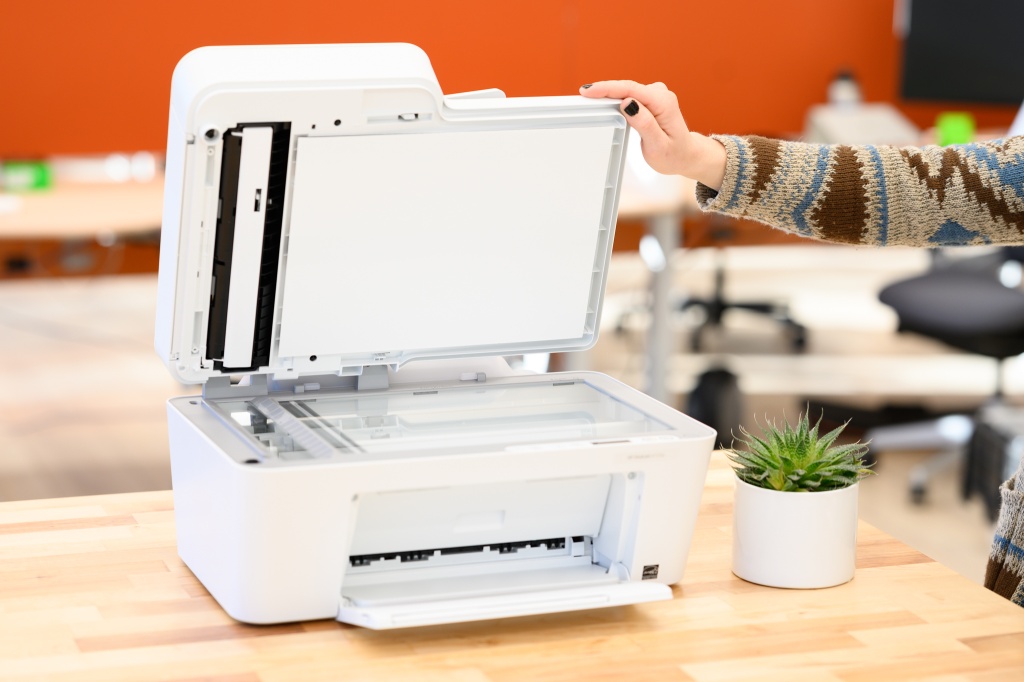We approached our home printer testing determined to uncover every possible frustration, error message, and paper jam possible so that you know all that you can before committing to a purchase. We also scrutinized the quality of printed materials produced by each model and how much they cost to produce, both in the short and long term. We focused our testing on five main metrics: text quality, ease of use, cost, printing speed, and graphics/photos.
Text Quality
To evaluate text quality, we printed the same plain black text pages on all of our printers in different sizes and fonts. We then viewed these pages both in normal and in various lighting situations. We looked for text characters with smooth, well-defined borders and bold, completely black interiors. Printers lost points if they produced text that looked faded or pixelated or if borders were blurry or smudged.
Graphics and Photos
We printed multiple business graphics and tested and assessed them for quality. As in the text quality test, we observed these graphics both with the naked eye and under various lighting conditions. Graphics with little pixelation and bold and solid received higher scores, while faded graphics with noticeable print dots and blurry edges received low scores.
Therefore we ran a similar test to assess photo printing quality. We viewed photos with the naked eye and in various lighting conditions. We also considered the sharpness of image resolution, how accurately colors were rendered (for the models that could print in color), and whether or not there was noticeable striping on larger or darker images.
Ease of Use
For our ease of use testing, we presented every opportunity for an issue to arise that we could come up with. We set up each model on a Mac, a Windows machine, and a Google Chromebook. For the models with WiFi connectivity, we switched between three different WiFi networks and tried to print from multiple machines.
Some models include features that allow you to print directly from a mobile phone, so we made sure to test those using both android and iOS devices. We also printed many different files, such as PDFs, word documents, spreadsheets, and Google Docs. For the all-in-one models, we used every single function available to make sure the added levels of complexity didn't cause any headaches. After running each model through all the various tasks we could imagine, we graded them based on how easy they were to complete and how many issues we ran into.
We also include a customer service score into our rankings, navigating each manufacturer's website and engaging with their live chat feature.
Cost
We evaluated the day-to-day costs of ink and toner associated with owning a printer and estimated how much one would spend overall throughout each printer's lifetime. Our ink and toner cost figures were based on the market price of replacement cartridges and the yield in pages expected from each one of those cartridges. When estimating lifetime costs, we made a few assumptions based on our research of average printer usage and the normal usage of everyone in the office. This left us with the parameters of a typical operational life of three years for each printer, a printing load of 2500 pages a year, and, for the models that could print in color, a split of 80/20 between monochrome and color sheets. So, this gave us 7500 sheets printed over each printer's lifetime. We used our ink and toner cost figures to calculate how much printing 7500 pages on each model would cost and then added that figure to each printer's retail price to get its lifetime cost of ownership. This calculation did not consider the cost of paper as it can vary depending on what type of paper you use and would be the same across all the printers. We then assigned relative cost scores based on these calculations.
Printing Speed
Our staple printing speed test involved printing a one-sided (simplex), monochrome, 10-page, all-text document. We timed how long it took from the moment we clicked print until the printer had dropped the last page into the tray. This test was repeated for double-sided (duplex) printing. We also ran other speed tests, such as how long it took to print a full-page high-resolution photo and the speed of printing a mixed text and graphic document.


